When I decided to make a 1900s tea gown I also decided that I didn’t have the budget to go buy fabric for it. Whatever I made was going to have to be stash-based.
I kept what I had in-stash in mind as I looked at designs. My primary inspiration is this satin and lace extravaganza from 1899:
I bought almost 15 metres of a really amazing poly-cotton sateen with a little metal woven through it in ivory last year.
I know you are all gasping in horror and thinking “poly-cotton!?! Ewwww!!!”, but really, this fabric is fabulous. I’ve had dozens of fabric snobs inspect it, and not one has guessed that it has a synthetic content. Most guess silk, or a silk-cotton or silk-linen blend. I looks rich and sumptuous and not at all synthetic-y, and it acts rich and sumptuous and natural and not at all synthetic-y.
When I bought it I first bought 3 metres, and took it home and ran it through a number of tests, determined that it fits my exacting standards, and I could even dye it – granted only pastel tones, but I’m happy with that! So I raced back to the shop and bought the rest of the roll at $10 a metre.
The only thing I don’t love about the fabric is the metal content. Because of it, the fabric never properly smooths out. It doesn’t really wrinkle or crease (thanks to the poly-cotton), but it doesn’t press smooth.
I’m calling it a sateen for now, but you could call it a satin, because of the polyester. What do you think? Sateen because of the cotton, or satin because of the polyester?
Right. So that sorts the over-robe. I’ve been criticised in the past for sewing with too many whites and barely-there tones, so I wanted the front of the gown to be an actual colour, even if only a pastel.
I bought an amazing robins egg blue silk razimir at a 40% off sale at Global Fabrics a few years back. I only bought 2 metres (they gave me an extra 20 centimeters, because they are wonderful) because it was so expensive, even on sale. I’ve regretted that I didn’t buy more so many times since. It would have been the perfect fabric for Emily’s dress, and a dozen other projects. But I thought that I could just squeeze the front of a petticoat and a bodice out of the fabric, and it would be perfect for the front of my tea gown.
It’s gorgeous fabric. Soft and buttery with a slight rib and a delicious sheen.
My decision to go with it was made easy by the discovery of a few metres of vintage kimono silk in the same shade of blue. There wasn’t a lot of it, and it wasn’t in perfect condition, but I thought I could get a lining for the robe out of it, so that you would get delicious glimpses of blue when the robe fluttered open.
I like the faint stripes and brocaded patterns in the kimono silk: just another bit of interest to the lining. And Japonisme is so very appropriate for 1900s and tea gowns!
Finally, I needed some truly gorgeous lace to finish the tea gown. Darn. I do have some fabulous vintage spider-web patterned lace, but it is far more 1930s than 1900s. It didn’t seem right for this, and I love it too much to commit it to something it isn’t right for.
Then, on a trip to the Fabric Warehouse I found the perfect lace. Darn. I was not supposed to buy fabric for this project! But it was so perfect, and I found everything else in the stash, and it was very reasonably priced (for lace).
Isn’t it perfect?
Yum! I love it! And it has a border on both edges, which makes laying out the pattern pieces much easier.
So, that’s my fabric. It’s good to have a design come together!

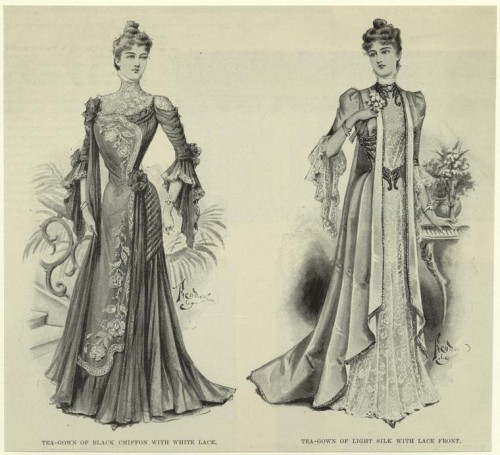
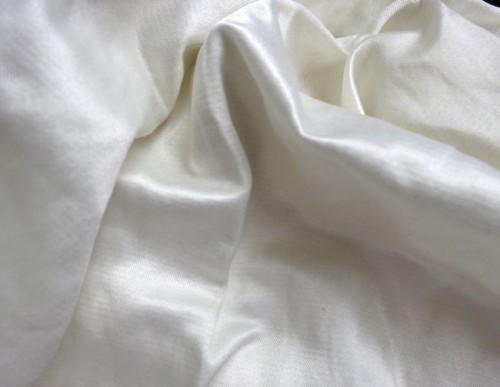
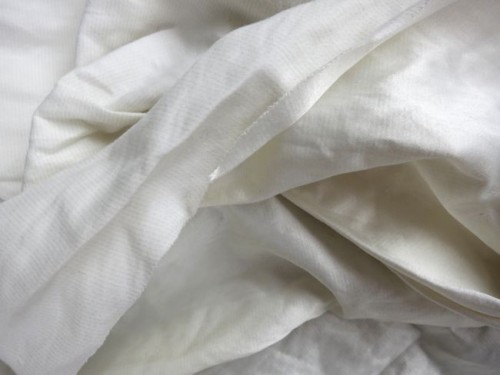
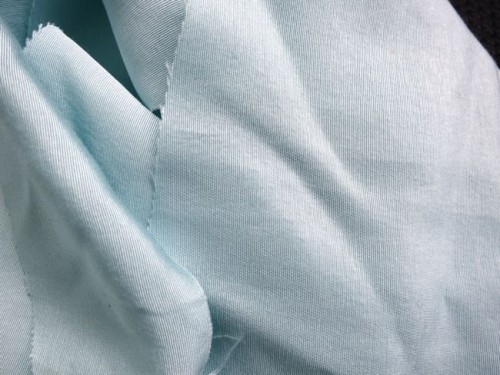
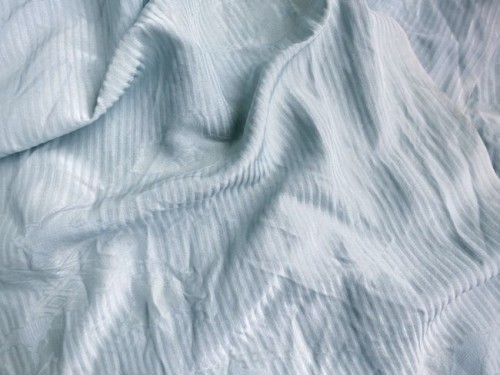
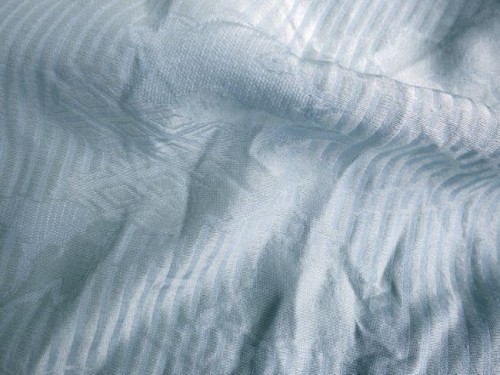


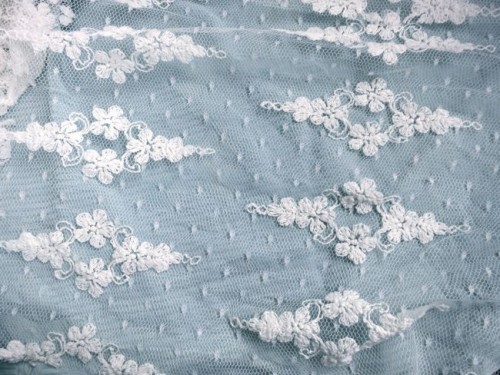
looking forward to seeing it all together 🙂
Je sens le projet magnifique ! Sa va être de toute beaute 🙂
Well, is the right side of the fabric warp-faced or weft-faced? Warp-faced means satin, weft-face sateen.
[WORDPRESS HASHCASH] The poster sent us ‘0 which is not a hashcash value.
Isn’t that a modern distinction, and historically it had to do with the fibres used? Silk (and these days synthetics) = satin, cotton (and rayon) = sateen? Something I must look into…
This makes me think how a middle class, or upper-middle class woman would have also approached the tea gown: using things she already had, and amending to what she did not. I love it!
Those are gorgeous fabrics. The kimono silk is my favourite.
I just love that lace! I have wanted to start making bobin lace for so long, but haven’t gotten there yet, unfortunately. It would be an awesome skill for historical costuming! The blue is also sooo perfect. I wouldn’t have scolded you for doing white on white though–it’s one of my favorite things to do! I can’t wait to see how you put it together.
That lace is so nice! I look forward to seeing your progress! If you use your stash only, but know you are making second or third best choices, you wont be happy with the gown. If you are not happy, you wont get the use out of it. If you don’t use it you are not being frugal….You wasted what was in your stash. I’m glad you bought the lace!
I’m very excited to see this made! It sounds like it is going to me beautiful!
That lace is unbelievably gorgeous! Can’t wait to see the finished product…